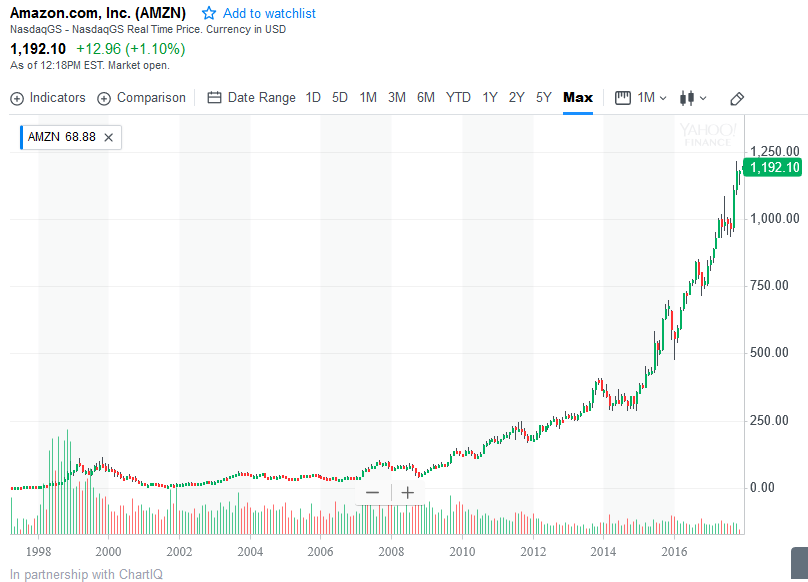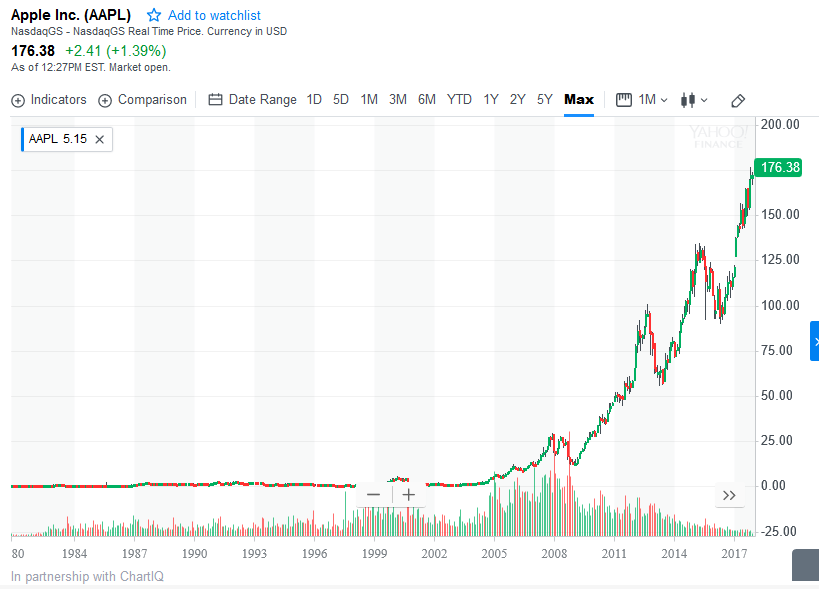I was listening to the radio the other day and they were talking about how they wished they would have invested in Amazon way back when. Whether it’s technology stocks or marijuana stocks or cryptocurrencies, there is always something exciting that creates buzz and garners attention.
Of course, the biggest challenge in this investing approach is that there is no history on which to base your decisions, only promises of future successes. Sure, a company might have a good idea or the markets might be ripe for a new opportunity. But how is one to know that one company is going to do much better than its competitors? As documented in many a success story, luck always plays a big part and one can never predict where luck is going to fall. Thus putting money in the next big thing is more speculation than investing.
The other challenge in putting monies in the next big thing is that typically one does not have an exit plan in place at the onset. How do you know when you should take your money out? And what happens if your gamble has not paid off after six months or one year or more?
Amazon and Apple
That said, let’s assume one is very wise and can pick out the stand out companies from their competitors at a very early stage. Say for example that we bought Amazon and Apple when they started trading on the public markets. Amazon went public in 1997. Since that time it’s adjusted share price has risen from $1.96 on May 15th,1997 to $1174.26 as of December 14th, 2017 for a total return of 59,862%.

On the other hand, Apple went public on December 12, 1980. It’s adjusted stock price has gone from $0.42 to $172.22 for a total return of 40,896%.

Which of these two companies was the better investment? To compare the two we look at the Compound Annual Gross Rate (CAGR). This is the average annual growth rate of an investment over a specified period of time and describes the rate at which an investment would have grown if it had grown at a steady rate. Although in reality stock investments go up and down and are not steady, the CAGR provides a useful tool for comparing one investment to the other. Computing the CAGR for Amazon we get 36.41% and for Apple we get 17.64%.
Although these numbers are significantly better than the expected CAGR of an investment in an index fund such as the S&P 500, they have the benefit of hindsight being 20/20 and thus they are not realistic. In practice, one can only speculate what the future might bring and which companies are going to stand out from the rest.
Science not Speculation
In contrast to this speculative approach, the quantitative approach is based on historical performance. As described in the posts the Quantitative Process – Part I and the Quantitative Process – Part II, the quantitative method analyses historical data and uses the acquired knowledge to make probabilistic predictions about the future. An investment is only viable when the analysis suggests that the investor has a positive expectation value going forward. In addition, the expected rate of return of the investment is quantified as is the probability of success. Thus the investor can make an informed decision as to which investments offer the best risk to reward ratios and can allocate his capital with confidence. Furthermore the investor knows at the outset what to do if the investment does not work out as planned as well as when to exit the investment.
The good news is that the savvy investor can have it all. As described in our Investment Strategies section, the expected CAGR for the strategies listed on this website ranges from 32.75% to 79.93%. Thus one can strive to achieve superior returns without the need for speculation.